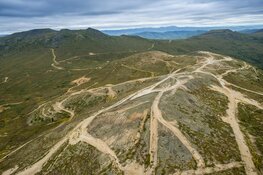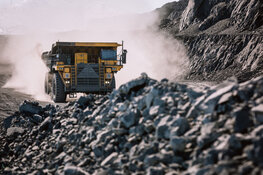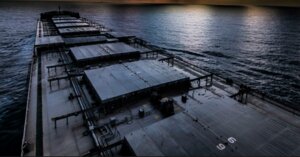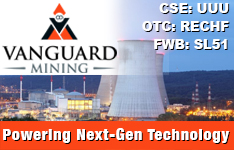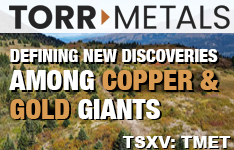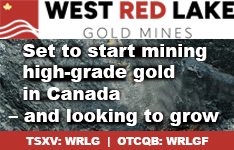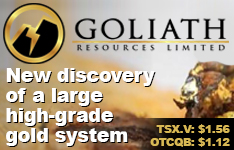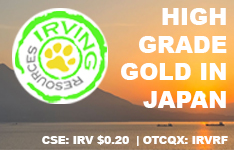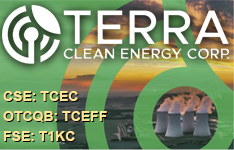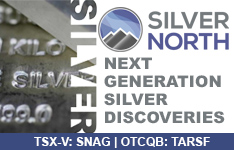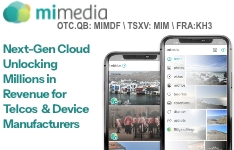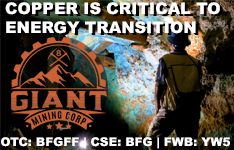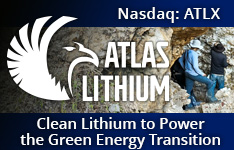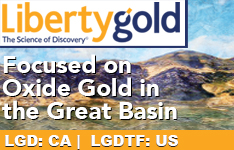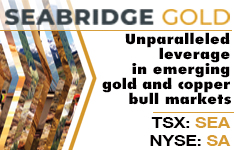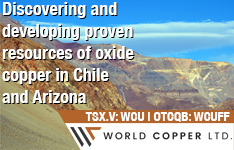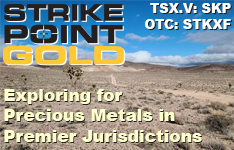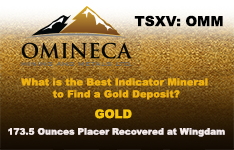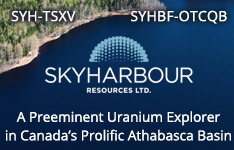Shares of U.S.-listed rare earth mining companies surged on Thursday after China agreed to postpone the implementation of additional export restrictions as part of a deal reached between President Donald Trump and Chinese leader Xi Jinping, according to a report by Sam Meredith for CNBC on October 30.
Critical Metals Corp. (CRML:NASDAQ) saw an increase of nearly 7% in premarket trading, USA Rare Earth Inc. (USAR:NASDAQ) climbed about 6%, and Energy Fuels Inc. (EFR:TSX; UUUU:NYSE.American) rose by 3%, the article noted. Meanwhile, MP Materials Corp. (MP:NYSE)ials and NioCorp Developments Ltd. (NB:TSX; NB:NASDAQ) both experienced gains of approximately 3%.
These developments followed Trump's announcement that the "rare earth issue has been settled" after what he called an "amazing meeting" with Xi in South Korea. As part of a larger agreement between the two largest global economies, which included the U.S. reducing tariffs linked to fentanyl, China recently stated that the rare earth export restrictions would be postponed by a year, Meredith wrote.
Trump said his administration anticipates China's decision to delay these export restrictions on rare earths to be "routinely extended," according to the piece. However, China’s earlier restrictions on rare earths, announced in early April, will remain in effect. On October 9, Beijing had threatened to tighten export controls on rare earths and related technologies to prevent what it termed the "misuse" of these minerals in military and other sensitive areas.
Rare earths refer to 17 elements on the periodic table with unique magnetic properties due to their atomic structure. These critical metals are extensively used in the automotive, robotics, and defense industries. In addition, other metals like copper, cobalt, lithium, nickel, and zinc are also considered critical metals.
Ensuring a Stable Supply
China is the dominant force in the critical minerals supply chain, producing about 70% of the world’s rare earths and processing nearly 90%, which involves importing these materials from other nations and refining them, the CNBC article noted. U.S. officials have previously cautioned that this dominance presents a strategic challenge as the world shifts towards more sustainable energy sources.
Critical Metals shares also soared more than 62% on October 6 following a Reuters report that the U.S. government was negotiating to acquire a stake in the mining company, wrote Vallari Srivastava for Reuters that day.
The move is part of Washington's ongoing efforts to ensure a stable supply of rare earths. If the deal goes through, it will provide the U.S. government with a direct stake in the largest rare earths venture in Greenland, a strategically significant and mineral-rich Arctic region that Trump has previously proposed the U.S. should acquire.
Shares of rare earth mineral producers also soared one week later after JPMorgan unveiled a decade-long US$1.5 trillion "Security and Resilience Initiative," which is designed to invest in sectors such as artificial intelligence, manufacturing, and critical minerals, likely aiming to align with President Trump's "America First" economic strategy, according to Forbes contributor Kirk Ogunrinde on October 13.
The initiative targets industries considered crucial to U.S. national security, including a US$10 billion investment in direct stakes in select companies, Ogunrinde wrote. The initiative will concentrate on four main sectors: supply chain and advanced manufacturing, defense and aerospace, energy independence and resilience, and frontier and strategic technologies, which are further divided into 27 sub-industries.
Following the announcement, shares of rare earth and critical metals producers surged — USA Rare Earth jumped 32%, MP increased by 24%, and Lithium Americas Corp. (LAC:TSX; LAC:NYSE) rose 11%. This announcement adds an additional US$500 million to the US$1 trillion JPMorgan had previously allocated to support clients in fields like aerospace, energy, and defense, the Forbes piece said.
"It has become painfully clear that the United States has allowed itself to become too reliant on unreliable sources of critical minerals, products and manufacturing — all of which are essential for our national security," said Jamie Dimon, chairman and chief executive officer of JPMorgan Chase.
G7 Initiative to Challenge Chinese Dominance
Canada is spearheading a G7 initiative to counter China's dominance in the global supply of the minerals, reported Mike Blanchfield, Zi-Ann Lum, and Graham Lanktree for Politico on October 29.
A Critical Minerals Production Alliance is being launched at a Toronto summit, coinciding with rare signs of easing tensions between the U.S. and China. Canada's initiative aims to weaken China's stronghold on minerals vital for modern technology, including wind turbines, electric vehicles, and various military applications such as missiles, drones, and nuclear submarines, the report said.
China's control over rare-earth mining and processing, highlighted by its introduction of export controls in October, has prompted the G7 to take action. The Canadian-led alliance is anticipated to unveil "firm commitments" from G7 nations to enhance the supply of critical minerals used in green technology and defense supply chains, the authors wrote.
This development follows months of discussions since the G7 Leaders' Summit in Kananaskis, Alberta, in June.
"They're acting to constrain the availability of these materials for geopolitical or for economic coercion, and that's not in anybody's interest," said Canadian Energy and Natural Resources Minister Tim Hodgson on Wednesday, without directly naming China.
Hodgson has been in talks with allied countries and businesses for months to formulate the plan. The G7 — which includes the U.K., U.S., Canada, Italy, Japan, Germany, and France — will announce the alliance on Friday, according to multiple officials who spoke to POLITICO. The announcement will also feature news of agreements with industry stakeholders.
Global Market Experiencing Remarkable Growth
According to the U.S. Geological Survey, the U.S. Energy Act of 2020 characterized critical minerals as those vital to the economic or national security of the United States; possessing supply chains susceptible to disruption; and playing a crucial role in the production of goods, the absence of which would significantly impact the country's economic or national security.
The act also clarified that critical minerals exclude fuel minerals; water, ice, or snow; and common types of sand, gravel, stone, pumice, cinders, and clay. The criticality of minerals is not fixed but shifts over time as supply and demand dynamics change, import dependencies fluctuate, and new technologies emerge. The 2022 list included 50 minerals from Aluminum to Zinc.
According to the Department of Energy, rare earth elements are utilized in generators for offshore wind turbines and motors for electric vehicles; lithium, cobalt, and high-purity nickel are crucial for energy storage technologies; platinum group metals are employed in catalysts for automotive, chemical, fuel cell, and green hydrogen applications; and gallium and germanium are important for semiconductors.
The critical minerals market size reached US$328.19 billion in 2024 and is projected to grow to US$586.63 billion by 2032, with a compound annual growth rate (CAGR) of 7.53% during the forecast period from 2025 to 2032, according to DataM Intelligence.
The global market for critical minerals is experiencing remarkable growth, primarily driven by the rapid shift towards clean energy technologies. According to the International Energy Agency (IEA), the market size for key minerals used in energy transitions has doubled over the past five years, closely matching the market size for iron ore mining. This surge is largely attributed to a threefold increase in lithium demand, a 70% rise in cobalt demand, and a 40% increase in nickel demand between 2017 and 2022, with clean energy applications accounting for significant portions of this demand, the research firm noted.
Here are three companies that specialize in exploring for the minerals, and what they've discovered so far.
Adamera Minerals Corp.
Adamera Minerals Corp.'s (ADZ:TSX.V) Talisman Historic Copper-Silver Mine has numerous similarities to stratabound copper-silver deposits in Montana, the company said.
Exact production records of the historic mine are not available, however, 521 tons of ore shipped during the early 1900s are reported to have averaged 5% copper (Cu), 102.9 grams per tonne silver (g/t Ag), and 4.1% zinc, according to the company.
Samples from an initial program yielded mineralization as high as 144 g/t Ag, 3.45% Cu, 6.3% lead (Pb) and 6.91% zinc (Zn). A magnetic survey defined a large magnetic high anomaly southwest of the mine that appears to be associated with this mineralization, Adamera said.
In 2021, a follow up field program included mapping, prospecting, sampling and geophysical surveying. The work identified zones of previously undocumented mineralization that demonstrate exploration potential.
Adamera Minerals Corp. on October 21 announced its intention to offer the Talisman Copper-Silver-Tungsten Property, located near Laurier, Washington, for joint venture.
The property includes the historic Talisman tungsten mine. Although Talisman is not central to the company’s core operations, the rising demand for critical minerals justifies further exploration of the project, the company said
Adamera has conducted a review of the property's mineral potential, where tungsten grades of 0.35–1.0% WO₃ have been reported.
“The Talisman Property is a critical minerals opportunity," said Adamera President and Chief Executive Officer Mark Kolebaba. "Our work confirms the presence of a polymetallic mineralized system that contains tungsten, copper, silver, lead, zinc, and bismuth. Such mineralization has been observed at shallow depths. Our work paid little attention to tungsten on a stand-alone basis. What did attract our interest was a newly recognized copper-silver target. Exploration has demonstrated that the mineralizing system extends well beyond the old tungsten mine workings, with clear potential for the discovery of a much larger polymetallic deposit."
According to a report by Newsworthy.ai on October 21, the company's plans to joint venture Talisman highlight "its potential for tungsten and other critical minerals in a geopolitically secure jurisdiction."
"A drill program has been prepared to test below and along strike of former mine workings, targeting high-grade scheelite zones and associated copper-silver-bearing sulfides," the report continued. "Additional work will include systematic soil and rock geochemistry focusing on tungsten and detailed EM survey."
Why Tungsten? Tungsten is recognized as a critical mineral by numerous countries and organizations, including the United States, the European Union, Canada, and the United Kingdom. Its critical status stems from its significance in ballistics, aerospace, and technology due to its unique properties, such as extreme hardness and a high melting point, Adamera noted.
Tungsten has not been mined commercially in the USA since 2015, with most supplies sourced from China. Adamera's work on the Talisman Property has primarily focused on high-grade copper and silver mineralization. Historically mined tungsten-bearing skarn zones in the Talisman Tungsten Mine have received limited attention.
The mine was a significant tungsten producer during World War II, providing strategic metal for U.S. military applications, the company said.
On October 9, Adamera announced a non-brokered private placement to raise up to CA$724,000 in gross proceeds through the issuance of both Share Units and flow-through share units, according to a release.
The funds will support upcoming exploration drilling at the company's Flag Hill South gold and silver property in Washington State. Additionally, the financing will aid ongoing systematic exploration at the South Hedley gold and gold-copper project in southern British Columbia.
"This financing enables Adamera to advance drilling on our high-grade gold targets in Washington State, while continuing systematic exploration on our South Hedley gold-copper prospects in B.C.," Kolebaba said.
About 3.29% of Adamera Minerals is owned by the institution, U.S. Global Investors Inc. 4.61% is held by management and insiders. The remainder is retail.1
The 52-week range of Adamera is CA$0.05 - 0.27. Its market cap is CA$2.58 million with 32.21 million shares outstanding.
Happy Creek Minerals
Happy Creek Minerals Ltd. (TSX-V:HPY) has just announced the completion of the first phase of its 2025 drilling program at its Fox tungsten project in British Columbia’s South Cariboo district, with all drill holes intersecting the host rock for tungsten mineralization, according to a report by Angela Harmantas for Proactive on October 28.
 Streetwise Ownership Overview*
Streetwise Ownership Overview*
Happy Creek Minerals Ltd. (TSX-V:HPY)
The company drilled 18 diamond core holes totaling 2,176 meters, aiming to expand the known tungsten resource at the Ridley Creek (RC) and BN zones and explore for new mineralized horizons, Harmantas wrote.
According to Happy Creek, each drill hole encountered calc-silicate rock, the primary host for scheelite, a tungsten-bearing mineral.
"We are pleased with the drilling achieved at the Fox Tungsten Project this season," said Chief Executive Officer Jason Bahnsen, according to the Proactive report. "Importantly, the deeper drilling at the BN Zone (Holes 16 to 18) intersected two thick zones of calc silicate approximately 100 meters apart. This is significant as it supports the concept of multiple mineralized horizons at depth that remain open."
At the RC Zone, 14 holes covering just over 1,300 meters confirmed the continuity of tungsten-bearing calc silicate and extended the mineralized horizon 250 meters southward toward the BN Zone. Drilling also suggested that the mineralization remains open to the west beneath Deception Mountain. Four holes totaling 871 meters were completed at the BN Zone, intersecting multiple calc-silicate layers up to 225 meters deep. The results support a model of stacked mineralized horizons, expanding the potential of the zone to the north and northwest beneath Deception Mountain, Harmantas reported.
Happy Creek last updated the project's resource estimate in 2018, reporting an indicated resource of 582,400 tonnes grading 0.826% WO₃ at the RC Zone and an inferred resource of 565,400 tonnes grading 1.231% WO₃, primarily at the BN Zone, the article said.
This season's exploration also identified new prospective rocks up to four kilometers south of existing drill areas, extending the overall strike length of the tungsten system to roughly 14 kilometers. Happy Creek indicated that future work will include follow-up drilling between the RC and BN zones and further testing at other targets, including the BK Zone, Nightcrawler, and South Grid areas.
Happy Creek is dedicated to discovering new resources and expanding its assets near infrastructure within its wholly owned portfolio of diverse metals projects in British Columbia, according to its website. These projects include Fox, the Silverboss molybdenum-copper-gold-silver project located next to Glencore's closed Boss Mountain molybdenum mine, and the nearby Hen-Art-DL gold and silver project.
On November 7, 2024, Happy Creek announced the completion of the sale of the Highland Valley Copper Project to Metal Energy Corp. (TSX:V MERG) (“Metal Energy”). Happy Creek retains a 9.9% stake in Metal Energy's issued capital and holds up to a 2.5% Net Smelter Return royalty on the Highland Valley mineral claims.
About 29% of the company is owned by insiders and management, including four major shareholders who hold about 23% total, and the rest is retail.1
Top shareholders include Patrick Triggs with 13.9%, Waratah Capital Advisors Ltd. with 13.75%, David Ellis Blann with 4.17%, Michael Cathro with 2.91%, and Walter Thomas Segsworth with 1.91%.
Its market cap is CA$26.55 million with a 212.44 million shares outstanding. It trades in a 52-week range of CA$0.04 and CA$0.16.
Allied Critical Metals Inc.
One junior explorer for the metals is Allied Critical Metals Inc. (ACM:CSE; ACMIF:OTCQB; 0VJ0:FSE).
 Streetwise Ownership Overview*
Streetwise Ownership Overview*
Allied Critical Metals Inc. (ACM:CSE; ACMIF:OTCQB; 0VJ0:FSE)
On October 30, the company announced in a release it had received a formal Letter of Recognition from idD Portugal Defense, designating its 100% owned Borralha Tungsten Project as a strategic initiative of national importance. idD Portugal Defense oversees the nation's defense industry and its supply chains.
This endorsement highlights Borralha's significance to Portugal's and Europe's defense and industrial autonomy goals. According to the company, this recognition enhances the project's profile within key Portuguese ministries and may expedite access to governmental support and funding.
"We are honored that the Portuguese government recognizes Borralha's strategic contribution to the Defense Technological and Industrial Base," said João Barros, president and COO of Allied Critical Metals.
Barros also mentioned that the company is increasing collaboration with government stakeholders as the project advances through its Environmental Impact Assessment process.
Located in northern Portugal, the Borralha Tungsten Project is a former mine site that operated from 1904 to 1985.
Allied has updated the project with a current National Instrument 43-101 (NI 43-101) technical report, which includes indicated resources of 4.98 million tonnes grading 0.22% tungsten trioxide (WO₃) and inferred resources of 7.01 million tonnes at 0.20% WO₃.
Highlights from the company's 2025 drilling program include results such as 12.0 meters at 4.27% WO₃, including 6.0 meters at 8.39% WO₃, considered to be one of the largest tungsten intercepts ever recorded. The company also holds the Vila Verde Tungsten-Tin Project, a brownfield site located about 45 kilometers southeast of Borralha, and is advancing plans for a pilot plant with an initial production capacity of 150,000 tonnes per year. A signed letter of intent for offtake with Global Tungsten & Powders in the U.S. is in place, with additional negotiations underway.
On August 22, John Newell of John Newell & Associates provided a technical analysis of Allied Critical Metals in a commentary shared with Streetwise Reports, noting that the stock was forming an early-stage uptrend following its initial listing.
Newell observed "clear support at higher lows" and identified an initial technical target of CA$0.45. He described the stock's setup as constructive, citing signs such as light-volume consolidation, a pullback to support, and the development of an uptrend line.
Allied Critical Metals subsequently reached the CA$0.45 target on September 3 and closed at CA$0.52 the following day. As of the time of writing, the stock was trading near CA$0.70.
The endorsement by idD Portugal Defense represents a significant milestone for Allied Critical Metals, positioning the company as a key tungsten supplier for Europe's defense and industrial sectors.
The Borralha Project is currently undergoing the Environmental Impact Assessment process as mandated by Portuguese mining regulations, with plans to construct a processing plant capable of handling 1 million tonnes annually.
This recognition could also pave the way for strategic alliances with original equipment manufacturers and defense contractors seeking reliable, European-sourced tungsten supplies.
As Allied advances its projects at Borralha and Vila Verde, the company has also broadened its reach through its U.S. subsidiary, which is tasked with supplying tungsten to American defense, aerospace, and manufacturing sectors. This international alignment, along with recent capital raises exceeding US$9 million in 2025, equips the company to advance its development plans with increasing institutional backing.
Insiders own approximately 16% of Allied. About 10% is held by institutions and institutional investors and the rest is held by retail shareholders.1
The company has 128 million common shares issued and outstanding and 134.05 million common shares on a fully diluted basis. Approximately 39.5 million shares are considered part of the public float and are available for trading. Its market cap is CA$89.8 million. Its 52-week range is CA$0.20–CA$0.89 per share.
| Want to be the first to know about interesting PGM - Platinum Group Metals, Copper, Antimony and Critical Metals investment ideas? Sign up to receive the FREE Streetwise Reports' newsletter. | Subscribe |
Important Disclosures:
- Allied Critical Metals Inc. has a consulting relationship with Street Smart an affiliate of Streetwise Reports. Street Smart Clients pay a monthly consulting fee between US$8,000 and US$20,000.
- As of the date of this article, officers, contractors, shareholders, and/or employees of Streetwise Reports LLC (including members of their household) own securities of Allied Critical Metals Inc. and Energy Fuels.
- Steve Sobek wrote this article for Streetwise Reports LLC and provides services to Streetwise Reports as an employee.
- This article does not constitute investment advice and is not a solicitation for any investment. Streetwise Reports does not render general or specific investment advice and the information on Streetwise Reports should not be considered a recommendation to buy or sell any security. Each reader is encouraged to consult with his or her personal financial adviser and perform their own comprehensive investment research. By opening this page, each reader accepts and agrees to Streetwise Reports' terms of use and full legal disclaimer. Streetwise Reports does not endorse or recommend the business, products, services or securities of any company.
For additional disclosures, please click here.
1. Ownership and Share Structure Information
The information listed above was updated on the date this article was published and was compiled from information from the company and various other data providers.


